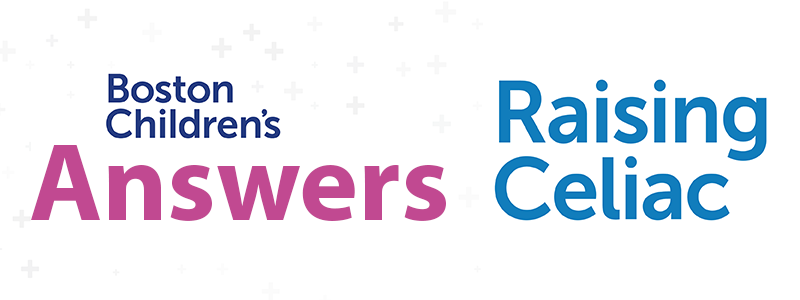
Season 2 Episode 5: The State of Celiac Disease in Latin America
Current Status
Price
Get Started
Course Credit
The following credits are available for this course:
| AMA PRA Category 1 Credits™ (MD, DO, NP, PA) | 0.75 hours |
| Contact Hours (Nurse) | 0.75 hours |
| CDR CPEUs (Registered Dietitian) | 0.75 hours |
| ASWB ACE Continuing Education Credits (Social Worker) | 0.75 hours |
(Note: a course evaluation is required to receive credit for this course.)
Click Here to View Transcript
Vanessa Weisbrod (00:02):
Welcome to season two of Raising Celiac, a podcast dedicated to raising the standard of education, awareness, and research on celiac disease and related autoimmune conditions. We have some exciting changes for this season. The Boston Children’s Hospital Celiac program has teamed up with the Celiac Disease Foundation to expand the reach of our educational podcast. Our goal is simple, to provide education to as many health providers and patient families as possible. I’m Vanessa Weisbrod and I’ve started a new role as the Chief Education and Community Engagement Officer at the Celiac Disease Foundation. In every episode, you’ll also hear from Janice Arnold, an incredible social worker at Boston Children’s Hospital, who is the voice of our patient stories. Each month on the podcast, we will invite leading experts to dive into a hot topic related to celiac disease and look at how it impacts a patient family, the latest research and offer suggestions for health providers to manage these complex cases. Every episode of the Raising Celiac podcast is accredited by the Boston Children’s Hospital Continuing Education department for physicians, nurses, social workers, dieticians, and psychologists. To claim your credits for listening to today’s episode, please visit DME dot children’s hospital.org/raising celiac. We’ll also drop that link into the show notes. Thank you to the Global Autoimmune Institute and the Celiac Disease Foundation for making this podcast possible. Now let’s get started with this month’s raising Celiac patient story.
Janice Arnold (Sophia) (01:40):
Meet Sophia, a 28-year-old graphic designer living in Bueno, Argentina. For years, Sophia struggled with digestive symptoms, bloating, diarrhea, and sharp abdominal pain that left her exhausted and unable to focus. She saw her primary care doctor regularly and was put on a variety of medications that seemed to help a little bit, but not totally solve her problems.
Vanessa Weisbrod (02:04):
These symptoms are classic manifestations of untreated celiac disease. However, limited awareness among healthcare providers in some regions can delay diagnosis. As was the case for Sophia.
Janice Arnold (Sophia) (02:15):
After being misdiagnosed with irritable bowel syndrome for years, Sophia finally received her celiac diagnosis following a family member’s diagnosis that prompted genetic testing. While she felt relieved to have answers, the challenges of maintaining a gluten-free diet in Argentina became immediately apparent.
Vanessa Weisbrod (02:33):
Argentina has a unique law, the national gluten-free food law requiring all restaurants to offer gluten-free options. In theory, every restaurant should offer gluten-free options that are safe for someone with celiac disease to eat, meaning that the food is prepared using gluten-free ingredients and is free of cross contact with gluten.
Janice Arnold (Sophia) (02:51):
Although the law sounds quite fantastic for the celiac community, Sophia quickly realized that enforcement and awareness vary greatly. Dining out often involves double checking ingredients and cross contact protocols leaving her anxious and feeling excluded. Despite these challenges, Sophia has found support through local advocacy groups and online communities. She says, living with celiac disease in Argentina is a balancing act. The laws are great in theory, but it’s up to us to ensure they’re followed. My hope is for greater awareness so people like me can feel safe and included.
Vanessa Weisbrod (03:27):
And the hope is that with greater awareness, life will continue to get better for patients in Latin America with celiac disease. But how does that happen? How do doctors get better educated on diagnosis and treatment options for celiac disease? How do dieticians learn more about the gluten-free diet and nutritional concerns? We’ll discuss this and more on today’s episode of Raising Celiac. Today we explore the state of celiac disease in Latin America with Dr. Julio Bai, a world-renowned gastroenterologist based in Buenos RA’s Argentina. Dr. Bai is a leader in celiac disease research and advocacy in Latin America. He helped establish the Latin American society for the study of celiac disease and recently co-hosted the Celiac Symposium in Bueno. RAs, we’ll discuss the unique challenges faced by patients and providers in the region, the progress made in awareness and legislation and the ongoing efforts to improve diagnosis and care. Welcome Dr. Bai to raising Celiac
Dr. Bai (04:29):
Buene. Thank you a lot for your invitation for having me here. I will try to certify your questions in doing my best.
Vanessa Weisbrod (04:40):
Thank you. So Dr. Bai, I am always so inspired listening to the stories you tell about celiac disease. Can you tell our listeners about the history of celiac disease in Latin America?
Dr. Bai (04:52):
Okay. Celiac disease is well learned from the first half of the last century and that in my impression was to the immigration that we have at the time of physician from Europe. We have a huge British community here in Argentina and especially during the second World War. We have a community coming from Eastern Europe and they introduced in, especially in Buenos Aires, some of them come in to Argentina after passing by the United States. But what they think that the story started, at least in South America in Argentina, because there is a very interesting points and the first point that I want to realize to make a special mention, two points. In 1848, there was a new gastroenterology hospital, very unique hospital only devoted to gastroenterology in Buenos Aires. They established at that time a group, a special group that was known as section in the structure of the hospital that was known as small bowel disorder section.
(06:18):
And they starting to having a lot of celiac existing patients with because it was the most important place for gastroenterologists and for patients also coming from all over Argentina and neighbor countries. And the second point was in 19 55, 5 years after the war knew that the grains were the responsible of celiac disease. It was the introduction of the development of special instrument, A two for biopsy per oral biopsy. And the author, the main author was a clever guy who was at that time, the time of all publication director of my hospital. And they published for the first time the findings in this small bowel because the pathological findings of almost 25 patients with celiac disease at the time of diagnosis, the problem was very common in this latitudes is that they polish the study in Spanish, similar thing that have had D in Netherlands that polish the findings on grains and Celia disease in Dutch. One year later, our use of the implementation of peral biopsy in Argentina appears the first well-known paper in the Lancet in England develop a different instrument with similar things but different instrument for small bowel biopsy. Now there are a lot of people recognizing that it was very interesting at the same time to different country with different language where they were progressing with similar ideas about the diagnosis. This is very common medicine and research especially, but it was the history of our country and the main points.
Vanessa Weisbrod (08:40):
So how did you get into celiac disease?
Dr. Bai (08:43):
I started, I am an old md. I started when I was 22 years old the year after I started my residency in gastroenterology four years. And in the third year, the group of small bowel disorders invited me to be part of the fellows of the group. I started there at that time and I remember vividly my first patient. It was a very small lady. Very small lady. I followed her for years and years. And the story is that she was the aunt of a president of our country. They were all the families, very small, very small. And I look for Celia disease and all the family. I never find another patient in that group. 10 years after that moment that I started there was ahead of the section for 10 years. And then I went to other position, higher positions in the hospital. But I follow mentoring the group until now, that is the story. After in the eighties we started production, scientific production and polishing papers, but we still continue doing that.
Vanessa Weisbrod (10:15):
I think it’s so interesting how the first patient that you diagnosed with the disease really stays with you. My mom was diagnosed with celiac disease in 1990 and she was her gastroenterologist first celiac disease diagnosis in his career. And at the time when she woke up, he was like, yeah, I think you have this disease called celiac disease and I’ve never seen it before in practice, but I think this is what you have. And he’s like, you just can’t eat cookies anymore. And my mom was like, I just can’t eat cookies anymore.
Dr. Bai (10:52):
I want to tell you something that is very common. It was the progress of the knowledge of on celiac disease. And I have a story about when we, well maybe that you want to make question
about that in the future, but I knew a guy from Boston in the early eighties and he was very clever guy and he published very exceptional papers in the early 1970s. I think that spur, I spurred our interest in celiac disease starting with the ideas in research of that guy. The name was Myron Paris, I dunno exactly. Myron Faluk. Interesting point that we started at that time with research related to this. And I was living a state in Dallas because I was professor of the University of Dallas in 85. When I was 36-year-old. I knew the A meeting that at the time was in San Francisco. I say, I need to present my research as after here.
(12:14):
And two years after we present our first abstract, people told me, celiac, this is not coming here in the states. And in 1991, 1 of my abstracts was accepted for the PLANARIZATION in the DDWE, just one planarization. And I think that it was the beginning of the interest of many different groups, some of the hiring people coming from Ireland or England, people who knew celiac disease at that time. Well, this increased the interest and now it’s very difficult to have a paper in plenary session in the states because you have hundreds of five drugs presented there.
Vanessa Weisbrod (13:12):
Absolutely. So Julio, you are one of the founders of the Latin American society for the study of celiac disease. Can you tell us about the L-A-S-S-C-D and its mission and supporting celiac patients across Latin America?
Dr. Bai (13:25):
Well, the Latin America is very particular part of Americas, but it’s not different to some parts of North America because you have a very wide variability and ethnic groups living here with different economic situation and cultural participation. And I think that perhaps the south cone of Latin America is more homogeneous because the ancestry came from Italy, Spain, and other West European countries. It is more homogeneous, it’s easier to look for celiac disease and to have interest in the topic. But countries like when I say South Kong, I say Argentina, UI Chile, but when you’re looking for Paraguay, Bolivia, brussel, Peru, Ecuador or Columbia, it’s different.
(14:39):
Huge in the population. And also cultural heterogeneity is import. They have different grains, different foods. They thought for years and years that they have no celiac disease there. And well, we went for years also given talks to different cancers several times and they are progressing with the idea and they are having more celiac disease patient and a low interest in the topic. The Latin American society for a study of celiac disease is just a brand of the international society. And our commitment is to increase the interest in celiac disease to alert about diagnosis and to have common plans, common ideas about how to explore, treat to diagnose, to treat. And also we try to have more people publishing the topic.
Vanessa Weisbrod (15:51):
Yeah, that’s so great. What have you found are the biggest challenges in diagnosing and treating celiac disease in Latin America?
Dr. Bai (15:58):
Important question, challenges. I think that the first one is to the education of doctors, physicians. That was a huge problem here also 30 to 40 years ago. It still is because now many people think about celiac disease, but they are still doing a diagnosis with six different serologic tests. It’s a huge amount of money dedicated or took in biopsies that they are read serological, read by general pathologists where the knowledge about the intrinsic problems that has the endoscopic biopsy is very problematic. And you have sub diagnosis and the diagnosis of celiac disease, but also over diagnosis of celiac disease. And we studied that. And 20 years ago here in Buenos Aires, it was a blind study compared pathologists working in private practice against expert pathologies. The misdiagnosis for positive diagnosis or negative diagnosis was almost 45%. Just the pathology reading of biopsies with almost 10% of biopsy that were diagnosed as positive or negative for celiac disease that were not useful for any consideration.
Vanessa Weisbrod (17:53):
Why were they not useful? Were they taken from the wrong areas or they weren’t good samples? Why weren’t they useful?
Dr. Bai (17:59):
The most important point that there was difference to the peral biopsy. Now the endoscopic biopsies have a huge problem, the disorientation of samples and the quality of samples because they treat samples after taking them with instrument to, and also the problem is the technician who needs to know about orientation, this is the most important problem. But also it’s a problem pathologist. They say in a normal condition, in a normal biopsy, mark zero or they look for node counting. In epithelial lymphocyte, they say high number of intre epithelial lymphocytes that is not diagnosed. And they put March one and March zero, March one is just for celiac disease. And march is consumed for many, many doctors as coupled with diagnosis of C six. This is the main mistakes.
Vanessa Weisbrod (19:11):
Yeah. Wow, that’s so interesting. So how about cultural and economic factors? How do they influence access to gluten-free foods and medical care?
Dr. Bai (19:20):
It’s important, especially in Latin America where we have cultural but also economic problems in the cost of gluten-free diet is almost three times the cost of similar products. No gluten-free. But it’s very important that at least in Argentina there is a huge support for gluten-free products. And it is very interesting, this story that I told you about native people from the northeast of Argentina. There were people that were, they live in the forest only living fishing or catching animals and nothing else. And the government at that time, it was in early 1980s, they decide they have a very short lifespan. They decided to supplement an limitation and they gave grains a huge amount of grains. And you see there, they are fat people of this, but they have huge concentration of those who are serologically celiac disease, this huge amount of antibodies. They’re obvious people and it was impossible to perform an elbow biopsy because they have some trivial structure in their life. Well, that was a mistake because they gave a lot of, the amount was extremely increasing amount of gluten of these individuals. And you say if we have amount of between 12 and 18 grams per day of gluten in Bueno Aires, they have almost 50 grams per day.
Vanessa Weisbrod (21:26):
That’s a lot of gluten.
Dr. Bai (21:28):
Yeah, a lot of gluten. Yeah, that’s true. That’s true. And I knew at that time case a young boy almost 40 years ago, he was a very indigenous face. He was seven eight. So at that time, the name, the last name was by, similar to my last name, he was Celiac. He was the first case that I have of this kind of population in Argentina, and which is a lesson of that, that their ethnic characteristics are similar to those of Bolivia or Wai or, and that means that they may have a lot of patients still undiagnosed.
Vanessa Weisbrod (22:25):
That’s so interesting. So your recent celiac symposium brought together experts from across the globe. Can you tell our listeners some of the key takeaways from the meeting?
Dr. Bai (22:35):
Yeah. We started doing the first symposium in 1982. We had our mentor, the guy who invited Myron Faluk to be part of our meeting. He was huge. I love that because we was a starting point and we repeat meetings every two years trying to go through, especially diagnosis, clinical aspects, follow up and treatment of Celia disease. And we repeat that for years, almost 20 years ago, we started with performing a successful Pan-American Congress of Celiac disease here in Bon Aires. And we remain doing that conferences during the pandemics, but now we have the interest of the International Society for Study of Celiac disease to organize a subsidiary here in Latin America. And we started with that and we started with the first symposium that was last November where you was part of that. And we have a strong plan of activity in the future. There is another point that is necessary to say that was in 77 in 1977. We do two fourth to collect patients and relatives of patient and to organize the first support society, the with assistance for select disease patients is, and one of the ideas to go through different societies of these advocacy groups in Latin America.
(24:35):
It’s very interesting, what we know very well, that great awareness about celiac disease is a greater education and greater content for celiac disease patients. And that is important. Then one of my special idea about the role of this institution is to enlarge research and to make participation of doctors in international research activities because it’s important to have the
view from this part of the world and to expand knowledge among doctors and physician because I think it is extremely important that the physician were very alert about celiac disease. If they are alert, more patient will come and better results for celiac disease patients.
Vanessa Weisbrod (25:43):
Absolutely. I think it’s so interesting how I-S-S-C-D, the international society is really working with these regionalized groups besides Latin America, there’s also the society in India now that’s working on advancing care and treatment. How do you see international collaboration between the groups working and what do you hope that it’ll bring to our community?
Dr. Bai (26:05):
I think that one of the points, making these type of meetings, international meetings and the participation of experts in the topic, I think we still need to do a lot about diagnosis, follow up and treatment of Celia disease patient. And we need to make a strong point of this part, but also research and this communication and participation with international groups, research groups is important. Is extremely important.
Vanessa Weisbrod (26:41):
For sure. So let’s switch gears for a minute and talk about the Argentina’s national gluten-free food law. Can you talk about this law, what it requires, and how patients are able to find gluten-free food?
Dr. Bai (26:54):
Yeah, it was a short story, but required three to four years of discussion about the topic because there are fanatics and people who have realistic ideas about the role of a law. And it’s not everything. It is not everything. I think that in theory, the law is great. I believe I looked for everything and there were CC to do that in this moment. And it was the first law, national law about Celia Greece’s protection. And what started about recognition, the recognition of the disease, the necessity of a gluten-free diet, supporting diagnosis with serology, a biopsy to everyone and making strong, well, trying to support research that was not enough. But Argentina had a lot of economic problems. The story in Argentina was increasing as it was in all over the war after the discovering of tissue transglutaminase antibodies. It was almost 30 years old. It was a change in the behavior of doctors and people in the war and more diagnostic anex explosion of diagnosis on that. We have also a national register for gluten-free quality of site register. I’m not so sure now, but we’ll improve in the future. I’m not sure. Also making and the decision that every restaurant in Argentina need to present a gluten-free menu. What is the realistic condition of those menus? Well remains to be explored with more and more interest.
Vanessa Weisbrod (29:12):
And it was interesting coming to Argentina for the first time, and I have celiac disease myself, and so hearing that this law was very exciting. I was like, I could eat anywhere. The food was very good. I will say that we had wonderful meals in every restaurant that we went to. We did a food tour and every stop did have gluten-free options. But it’s true that it’s not the same. Every
restaurant you walk into does not have a full gluten-free menu. It may a packaged item or it may be, well, maybe there’s cross contact, we’re not sure, but I do think that at least the awareness of gluten-free was better than in other countries I visited.
Dr. Bai (29:54):
Yeah, yeah, yeah. It’s huge. It’s huge. And my room, I have maybe half of patients saying they come because I have known as a gastroenterologist. Many people ask me maybe that my symptoms can be due to celiac disease. I say, you know my dedication about celiac disease. No. Well, that means that the people is extremely alert about celiac disease and this is important.
Vanessa Weisbrod (30:31):
So Dr. Bai, you’ve just hosted this incredible conference. What’s next for celiac disease in Latin America?
Dr. Bai (30:38):
Oh, or next? I think that we need to improve diagnosis, follow up. That is important. People is not following up. What is the rule, the conviction that we have us doctors about how should be the management of celiac disease after diagnosis. But I think that the awareness of physician, our celiac disease needs to improve research in our country to have more people working in research. We have a problem. We have three Nobel Prize in medicine, three novel prize, but research at the interest in research of people staying here in Argentina is not enough. Even the people who work in research institute or in universities, they do not produce significant number of publication, and we need to work on that. If there is people working research, I think the awareness is more precise and more strong.
Vanessa Weisbrod (31:54):
Absolutely. Well, Dr. Bai, thank you so much for being a part of this discussion. We’re so grateful for all of the work that you’re doing in Argentina and around the world, and I feel very lucky to have gotten to spend time with you and learn from your wisdom and thank you to all of our listeners. But now let’s find out where our patient Sophia is today.
Janice Arnold (Sophia) (32:19):
Today Sophia is thriving in her gluten-free lifestyle, supported by advocacy groups and friends who understand her condition. She’s become an advocate herself, working to ensure local restaurants comply with gluten-free laws. In her own words. Every small step forward makes a big difference. The laws in Argentina are great, but we must keep educating people to make them a reality for everyone.
Vanessa Weisbrod (32:45):
And now a word from the Global Autoimmune Institute.
Global Autoimmune Institute (32:49):
The Global Autoimmune Institute works to empower solutions and the diagnosis and treatment of autoimmune diseases. Through research, education, and awareness, while supporting multidisciplinary approaches to health, we are thrilled to support the production of this educational podcast.
Vanessa Weisbrod (33:08):
Thank you for listening to this episode of Raising Celiac. A special thanks to the generous contributions from the Global Autoimmune Institute to make this podcast possible. A reminder to all physicians, nurses, social workers, dieticians, and psychologists to claim your continuing education credits. For listening to today’s episode, please visit DME dot children’s hospital.org/raising celiac. If you like what you heard, be sure to write a review, like and subscribe wherever you get your podcasts. For more information, check us out on social at Boston Children’s Celiac, on TikTok, at Children’s Celiac, on Twitter, or at Celiac Kids Connection on Instagram. Have a great month.
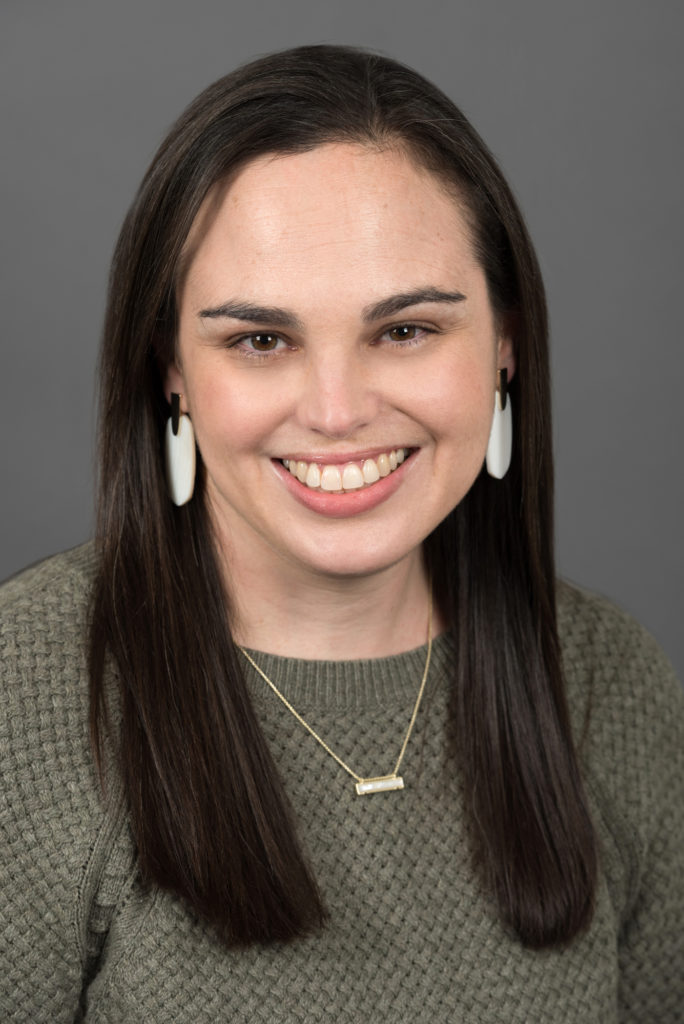
Vanessa Weisbrod
Director, Celiac Disease Program
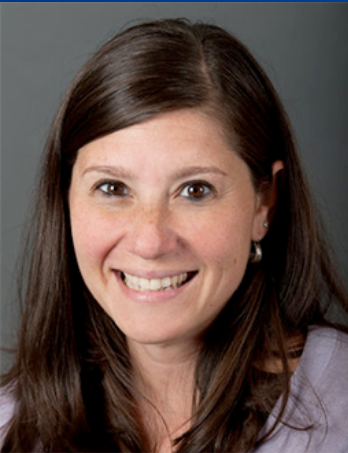
Janis Arnold, MSW, LICSW
Clinical Social Worker, Division of Gastroenterology, Hepatology, and Nutrition
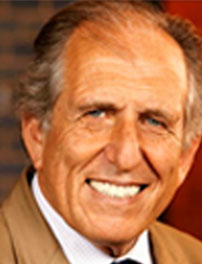
Julio Bai, MD
Emeritus Professor of Medicine, Research Institute, Universidad del Salvador, Argentina
In this episode of Raising Celiac, we explore the state of celiac disease in Latin America with renowned expert Dr. Julio Bai. From Argentina’s groundbreaking gluten-free food law to the barriers in diagnosis and treatment across the region, we dive into the realities patients and providers face. Hear Sofia’s journey of navigating life with celiac disease and learn how advocacy, research, and international collaboration are shaping the future.
Learning Objectives:
At the conclusion of this educational program, learners will be able to:
- Identify the key barriers to diagnosing and managing celiac disease in Latin America, including cultural, economic, and healthcare system limitations.
- Examine the role of Argentina’s National Gluten-Free Food Law and its real-world effectiveness in supporting patients with celiac disease.
- Learn how organizations like the Latin American Society for the Study of Celiac Disease (LASSCD) and patient advocates contribute to improving celiac disease awareness, education, and access to safe gluten-free food in the region.
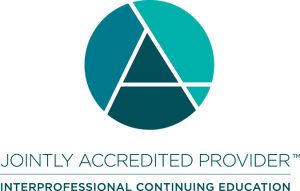
In support of improving patient care, Boston Children’s Hospital is jointly accredited by the Accreditation Council for Continuing Medical Education (ACCME), the Accreditation Council for Pharmacy Education (ACPE), and the American Nurses Credentialing Center (ANCC), to provide continuing education for the healthcare team.
Physicians
Boston Children’s Hospital designates this live activity for a maximum of 0.75 AMA PRA Category 1 Credits ™. Physicians should claim only credit commensurate with the extent of their participation in this activity.
Nurse
Boston Children’s Hospital designates this activity for 0.75 contact hours for nurses. Nurses should only claim credit commensurate with the extent of their participation in the activity.
Social Work
As a Jointly Accredited Organization, Boston Children’s Hospital is approved to offer social work continuing education by the Association of Social Work Boards (ASWB) Approved Continuing Education (ACE) program. Organizations, not individual courses, are approved under this program. State and provincial regulatory boards have the final authority to determine whether an individual course may be accepted for continuing education credit. Boston Children’s Hospital maintains responsibility for this course. Social
workers completing this course receive 0.75 ACE CE continuing education credits.
Dietician
Boston Children’s Hospital designates this activity for 0.75 contact hours for dieticians. Dieticians should only claim credit commensurate with the extent of their participation in the activity.
Disclosures
Boston Children’s Hospital adheres to all ACCME Essential Areas, Standards, and Policies. It is Boston Children’s policy that those who have influenced the content of a CME activity (e.g. planners, faculty, authors, reviewers and others) disclose all relevant financial relationships with commercial entities so that Boston Children’s may identify and resolve any conflicts of interest prior to the activity. These disclosures will be provided in the activity materials along with disclosure of any commercial support received for the activity. Additionally, faculty members have been instructed to disclose any limitations of data and unlabeled or investigational uses of products during their presentations.
The following planners, speakers, and content reviewers, on behalf of themselves, have reported the following relevant financial relationships with any entity producing, marketing, reselling, or distributing health care goods or services consumed by, or used on patients:
Vanessa Weisbrod
None
Janis Arnold, MSW, LICSW
None
Julio Bai, MD
None
Please see the FAQs below for common questions about how to work through a course. If you have a question or issue that is not addressed in the FAQ, please use this form to submit a help request, or if your issue is urgent, call the CME office at: 617-919-9908.
How do I navigate this course? There are two ways to access and navigate course content with the interactive table of contents: at the bottom of the main course page or in the sidebar on the right side of the page. Select the links in the table of contents to access the corresponding content. Depending on the course, access to content may be linear, in which case each content module or section can only be accessed if the prior ones are completed, or non-linear, in which case modules and sections can be accessed in any order. Use the breadcrumbs at the top of any course page to orient yourself within a course, or return to a previous course section or the main course page. How do I claim credit? If the course has been accredited, available credits will be displayed on the course home page. Select only those credits that apply to your profession, and click/tap “Apply Selection.” You may make your selection at any point while you are taking the course, or after you have completed it. How do I download a certificate? There are two ways to view/download your certificate: from within the course or from the course listing under your profile (select the document icon). In either case, you must have selected at least one available course credit type to generate a certificate. How do I view/print my transcript? You must be logged in to view your transcript. Select My Profile at the top of the page. If you do not see the transcript selector, be sure the Courses tab is selected. Select the type of credit and dates to include in your credit report. To include all credits from all time, leave the options blank. Select Download Transcript to view/download your transcript. Note each credit type in your transcripts starts a new page. How do I request a refund? Please email the CME Department to request a refund.How do navigate this course?
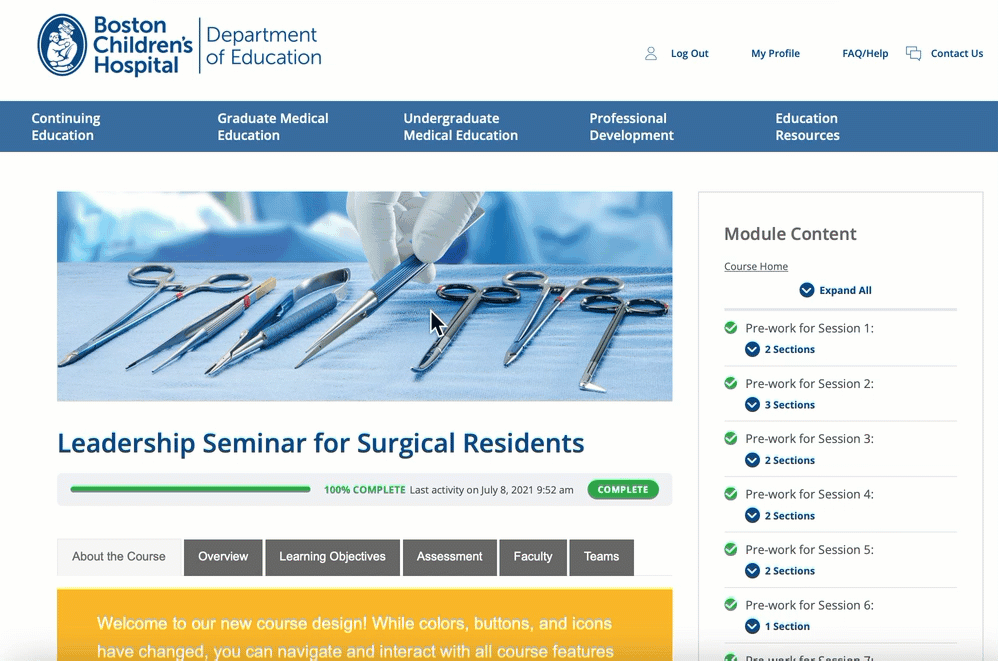
How do I claim credit for this course?
How do I download a certificate?
How do I view/print my transcript?
How do I request a refund?
